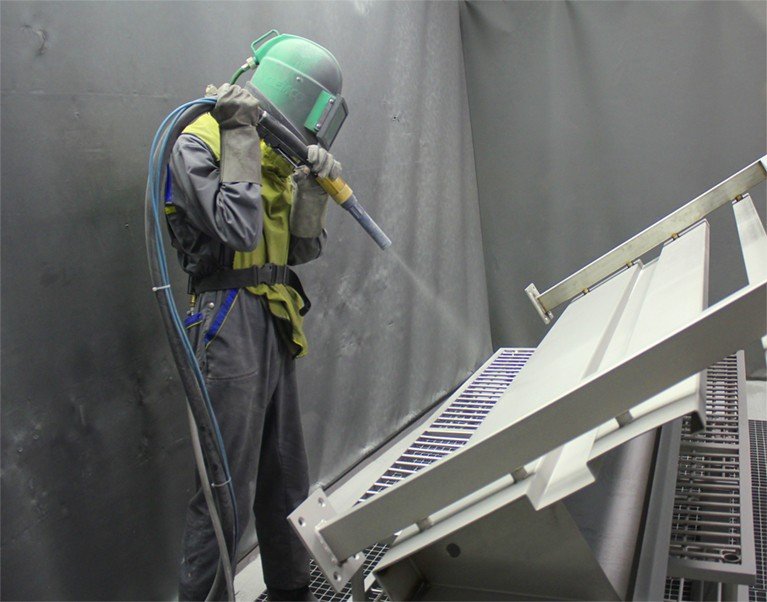Sandblasting
Sandblasting, or abrasive blasting, is a process used to clean, smooth, or shape surfaces by propelling fine particles (such as sand, glass beads, or other abrasives) at high speed through a compressed air nozzle. The abrasive particles impact the surface, removing contaminants, old coatings, or rough edges. Sandblasting is utilized in various industries, including automotive, construction, and manufacturing, for surface preparation, paint removal, rust removal, and creating texture or etching on materials.

Benefits of Sandblasting:
Sandblasting, also known as abrasive blasting, offers several benefits in various industries. Here are some advantages of using sandblasting:
Surface Preparation
Sandblasting is an effective method for surface preparation before painting, coating, or bonding processes. It removes rust, scale, old paint, contaminants, and other surface imperfections, creating a clean and properly textured surface. This enhances adhesion and ensures the longevity and quality of the applied coating or finish.
Removal of Coatings and Graffiti
Sandblasting is effective in stripping away old paint, coatings, and graffiti from various surfaces. It can remove layers of paint or coatings without damaging the underlying substrate. This makes it a valuable technique in industries such as automotive, construction, shipbuilding, and restoration.
Material Preparation
Sandblasting can improve the surface properties of materials. For example, it can roughen surfaces to enhance bonding in adhesive applications. It can also activate surfaces to promote better paint adhesion or increase the surface area for improved heat transfer in heat exchangers or other heat-sensitive applications.
Fast and Efficient
Sandblasting is a relatively fast and efficient process, enabling rapid surface preparation and cleaning compared to manual methods. It allows for quick turnaround times and increased productivity in industrial applications.
Efficient Cleaning
Sandblasting can efficiently clean surfaces by removing dirt, grease, oil, and other stubborn contaminants. It is particularly useful for cleaning large or complex objects, machinery, equipment, and structures. Sandblasting can reach into crevices and hard-to-reach areas, providing thorough cleaning and restoring surfaces to their original condition.
Surface texturing
Sandblasting can create surface textures and patterns on materials. By adjusting the blasting pressure and the type of abrasive material used, different surface finishes can be achieved, such as smooth, matte, rough, or textured surfaces. This is particularly useful in architectural applications, decorative designs, or when creating a specific aesthetic appearance.
Restoration and Refurbishment
Sandblasting is commonly used in the restoration and refurbishment of historical structures, monuments, and artifacts. It can gently remove dirt, grime, and corrosion without causing damage to the original material. Sandblasting helps revitalize and preserve these cultural assets, bringing them back to their original glory.
Environmentally Friendly
Sandblasting can be performed using environmentally friendly abrasive materials, such as recycled glass or other non-toxic media. These alternatives minimize environmental impact by reducing dust, emissions, and the generation of hazardous waste.

